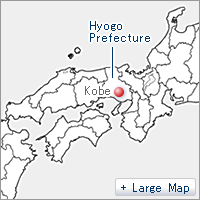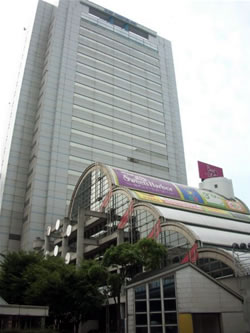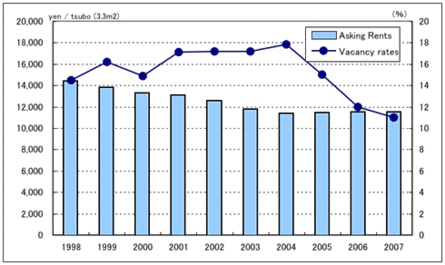(1) Location & Access

- Sannnomiya Station, located at the center of Kobe, is approximately 22 minutes from Osaka by express train. It is roughly 1 hour and 10 minutes by air or about 3 hours by bullet train from Tokyo.
(2) Overview
Kobe has long developed as a trading port and it became an international port city with a population of one million in 1941. While it always played an important role as one of the major trading ports in Asia together with Yokohama, Pusan and Singapore, the port was devastated by the Great Hanshin-Awaji Earthquake in 1995.
Kobe opened itself to the world as a trading port in 1868 and it has been directly exposed to foreign cultures from early on. Its streets are lined with beautiful European-style buildings and the open-minded attitude of its people attracts many tourists. Along with its trading port, heavy industries such as shipbuilding and the steel industry have also developed. In addition, fashionable industries such as western confectionaries, pearl processing and the apparel business prosper and contribute to tourism.

The Great Hanshin-Awaji Earthquake, with a magnitude 7.3, occurred on January 17, 1995. The earthquake completely destroyed more than 67,000 buildings and resulted in fires that burned down 6,900 more. Most of the port facilities could no longer be used and the volume of freight handled at the Kobe port was reduced from 170 million tons a year to half that figure. With some corporations moving out of the city, its economy and industry were hard hit.
The city's population, which was roughly 1.52 million before the earthquake, decreased to roughly 1.42 million (a decrease of 6.4%) in October, immediately after the earthquake. In November 2004, the population finally exceeded that of before the earthquake. The number of tourists that visited Kobe in 2006 exceeded the number of tourists visiting in 1994 by 19.7%.
The city is finally coming out of its business funk, which has continued since the earthquake. The vacancy rate of office buildings was above 15% for quite some time, but it has settled down to 10% to 11% since 2007. Two large buildings were completed in 2006, although there are no specific plans for 2007 and 2008. (The vacancy rate and construction plans were obtained from material provided by CBRE.)
The built-up area of the city is on a 3-km wide thin strip of low-lying land between the mountains to the north and the sea to the south. The main business districts of Kobe are located to the south side of Sannomiya Station, on the south side of JR Motomachi Station and in the Kobe Harborland area (the site opened in 1992 on the former site of the freight station of the former Japanese National Railways). Among them, Sannomiya Station is situated most centrally and commercial facilities are progressively concentrated in its surrounding areas because of its proximity to stations on the JR, Hankyu and Hanshin lines. Most office buildings are located further to the south.
Due to its close proximity to the Osaka metropolis, Kobe has long been a bedroom town to Osaka and extensive housing development has been undertaken. Recently, a new town was developed to the north and west of Rokko-sanchi (the Rokko Mountain area). The western area has gone through a major transformation, being home to newly built schools and high-tech industry sites, in addition to houses. As represented by Port Island, an artificial island completed in 1981, port facilities and urban areas have been expanded by landfilling of coastal areas and the sea. After the earthquake, Kobe City expanded Port Island and is inviting medical-related industries to take up tenancy there. The Kobe Airport, which is situated off Port Island, opened in February 2006.
(3) Profile Data
1. Major office buildings: year completed, major owner
Kobe Harborland Center Building: 1992 Pacific Holdings
Sannomiya Sanwa Toyo Building: Crescendo Investment Corporation
2. Major companies headquartered in Kobe City
Kobe Steel, Asics




